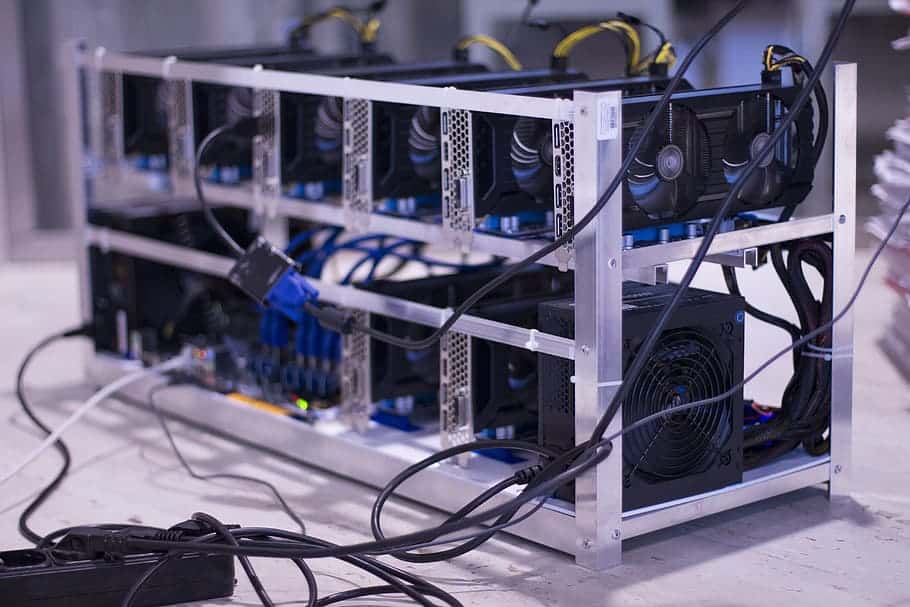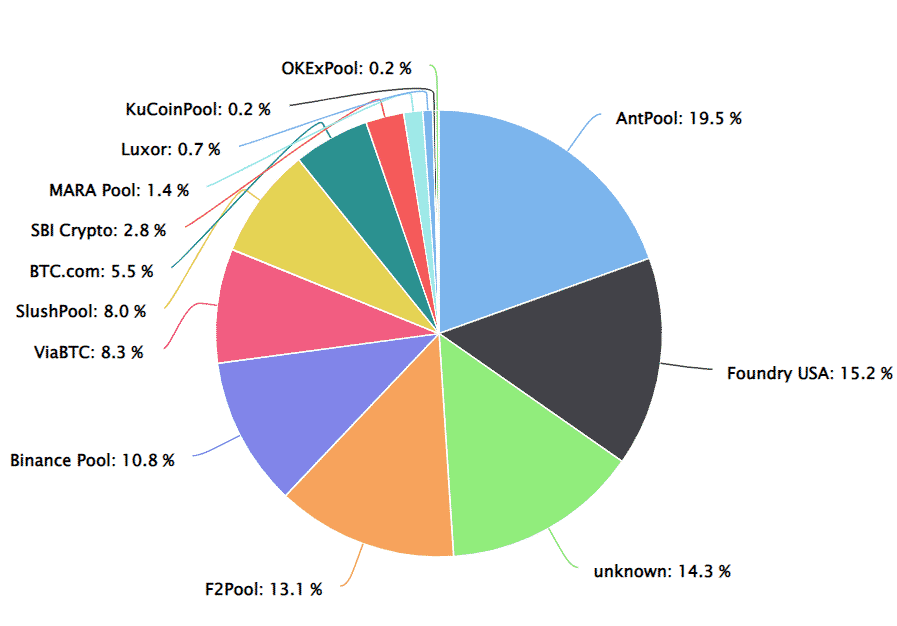How Crypto Mining Has Changed Since China’s Ban in 2021
It appears that mining activities have gravitated towards the US, as the country contributes 35% of the total hashrate of Bitcoin.


Crypto mining used to be a desktop hobby — you could earn some “Internet points” (a.k.a. Bitcoin) for securing the nascent decentralised peer-to-peer payments network. Today, crypto mining is a legitimate business worth almost 1 billion US dollars in market size.
How did this happen? Well, Bitcoin was designed such that updating its distributed Bitcoin ledger (a.k.a. blockchain) must require computational work. This type of work is called Proof of Work. Proof of Work used to be easy, as anyone with a laptop can update the ledger and earn some Bitcoin as a reward.
However, crypto mining became a game of “who has the beefiest computer”, and starting 2021, not even GPUs can mine Bitcoin.
Groups of miners begin forming companies, and raise funds to buy expensive specialised mining equipment, called ASICs, which stands for Application-Specific Integrated Circuits.
Learn the basics: What is Proof of Work?

Crypto mining isn’t limited to Bitcoin. Litecoin, and Dogecoin, among dozens of others, rely on crypto miners to secure their network.
At the time of writing, Ethereum requires Proof of Work miners. However, this may change soon as Ethereum is transitioning to Proof of Stake that requires no mining.
Learn more: What is Proof of Stake?
Mining activities became somewhat centralised
Whether this design was intentional or not, Proof of Work mining activity has become somewhat centralised in countries where energy is cheaper. For a long time, China has been the epicenter of the crypto mining industry. It was estimated that up to 75% of the world’s Bitcoins have been produced in China.
Luckily, the network was still decentralised enough to avoid a hashrate majority attack. This would occur if a mining company possesses at least 51% of all the computational power (called hashrate) of the entire network. In such a scenario, the miner can influence the Bitcoin ledger in a dishonest way, such as reversing a payment.
Another concern is, what happens if so many mining rigs shut down at once, due to a power outage or an outright cryptocurrency ban?
Well, both of these events have occurred in China. First, there was an accident in one of China’s hydroelectric dams, which resulted in a power outage that shuts down more than 50% of the Bitcoin network in April.
Another mass shutdown happened more gradually, as the Chinese government performed a crackdown on cryptocurrency mining operations throughout September.
When a nation shut down more than half of the Bitcoin network
In order to shut down Bitcoin, the entire network has to go offline. While uncertainty and panic struck China-based mining operators, the network was held up in other locations.
Crypto mining companies such as Bit Mining left China to find places that are more miner-friendly, such as the United States, Kazakhstan, Iceland, and Canada.
For a brief time, miners with great computational powers were out from the network, and the difficulty of Proof of Work decreased. This allowed for smaller crypto businesses to enter the network, fill in the spot, and earn some Bitcoin. Also, for a brief time, Bitcoin was far more decentralised after a long time.
It took a few months for the big players to set up shop elsewhere, raising the Proof of Work difficulty and kicking the small miners out. Granted, these large mining companies have now spread out across the world.
Mining business is booming in the US
Today, it appears that mining activities have gravitated towards the US, as the country contributes 35% of the total hashrate of Bitcoin, according to Cambridge Bitcoin Electricity Consumption Index’s Bitcoin Mining Map.
Still, this is far less centralised than it would have been if China had not driven crypto miners away from the mainland. Crypto miners moving to the US has two other benefits — further decentralisation and a greater possibility of sourcing power from renewable energy.

US-based Foundry is a mining pool, a company that contributes 13% of the total hashrate, and offers shares of the Bitcoin profit to participating investors. Recently, they have formed a subsidiary, called FoundryX, that offers mining equipments to small, mid- nad large-scale miners.
There has been a supply chain bottleneck for ASIC miners and hardware to produce them. Foundry has completed over $125 million in hardware sales this year, and has given North American miners a reliable access to technology to upscale their operations.
Sustainability for Bitcoin miners
It’s true that Bitcoin maximalists’ agenda is at odds with the pro-environmental movement that is growing stronger each year. But, it doesn’t have to be.
Arguably, Bitcoin’s weakness of being power-hungry may result in a highly motivated race to find and adopt green technology, so that miners can stay in business.
VivoPower is a sustainable energy service provider, which owns solar power projects throughout the U.S. One of the challenges of the sustainable energy business is the oversupply of power.
VivoPower’s subsidiary Caret Decimal will have the ability to mine cryptocurrencies, perhaps using some excess power to produce monetary value in Bitcoin or other cryptocurrencies.
The potential to combine solar energy and crypto mining is remarkable. The company said, “Once fully operational, these sites are expected to have 4,398 petahash capacity, a fleet of 33,000 mining rigs, revenue potential of approximately $270 million per annum with an EBITDA margin of approximately 87% based on forecast bitcoin prices.”
Sustainable crypto mining is a topic that has been circulating around social media as well as industry experts worldwide. You can find more great examples of companies combining sustainable practices and crypto mining in a previous article.
Read more: Turning Digital Gold to Green: Bitcoin Mining will use more Renewables.
Share to
Stay curious and informed
Your info will be handled according to our Privacy Policy.
Make sure to follow our Twitter, Instagram, and YouTube channel to stay up-to-date with Easy Crypto!
Also, don’t forget to subscribe to our monthly newsletter to have the latest crypto insights, news, and updates delivered to our inbox.
Disclaimer: Information is current as at the date of publication. This is general information only and is not intended to be advice. Crypto is volatile, carries risk and the value can go up and down. Past performance is not an indicator of future returns. Please do your own research.
Last updated October 18, 2022





